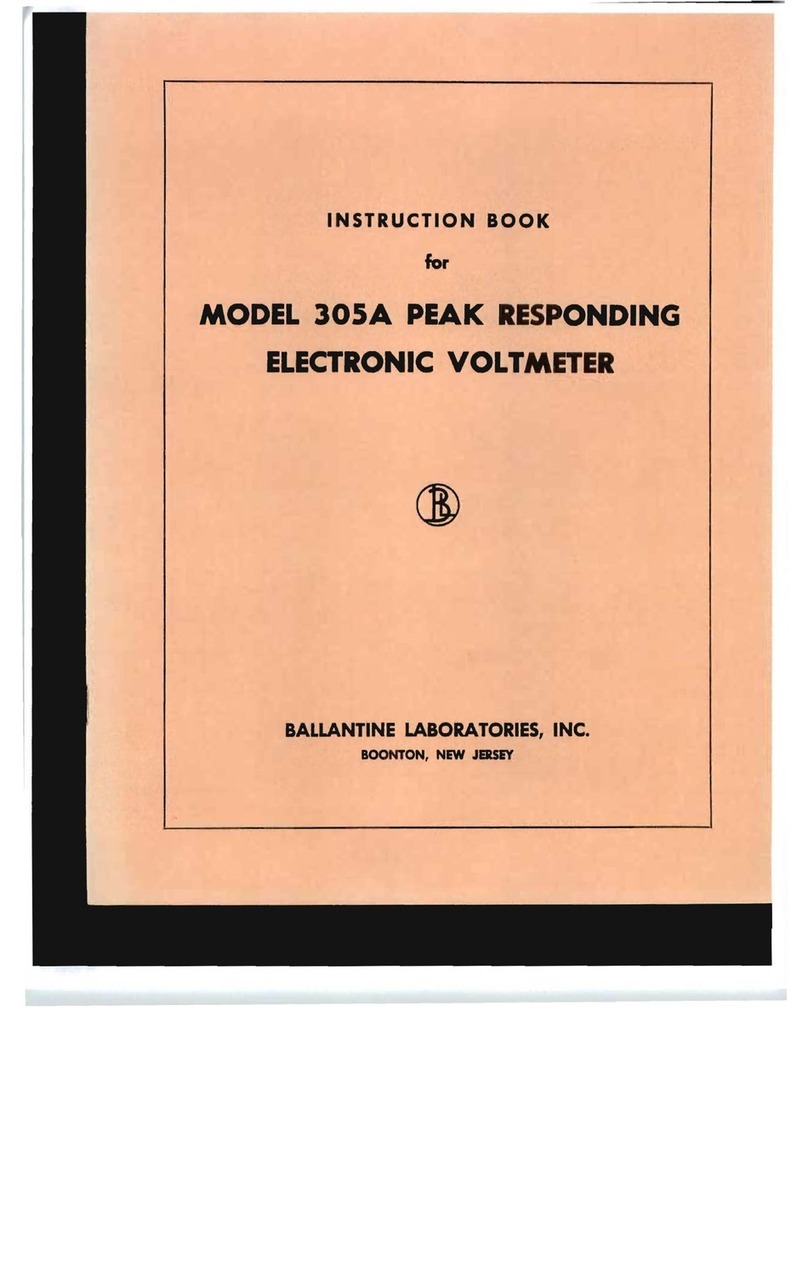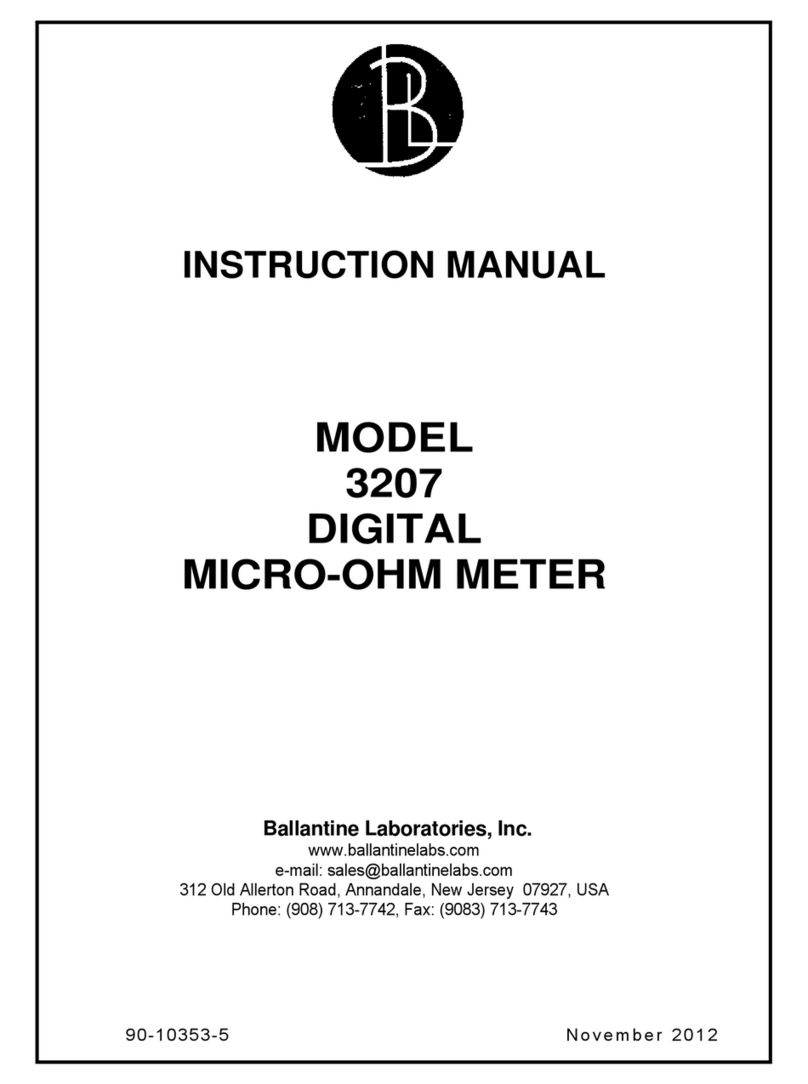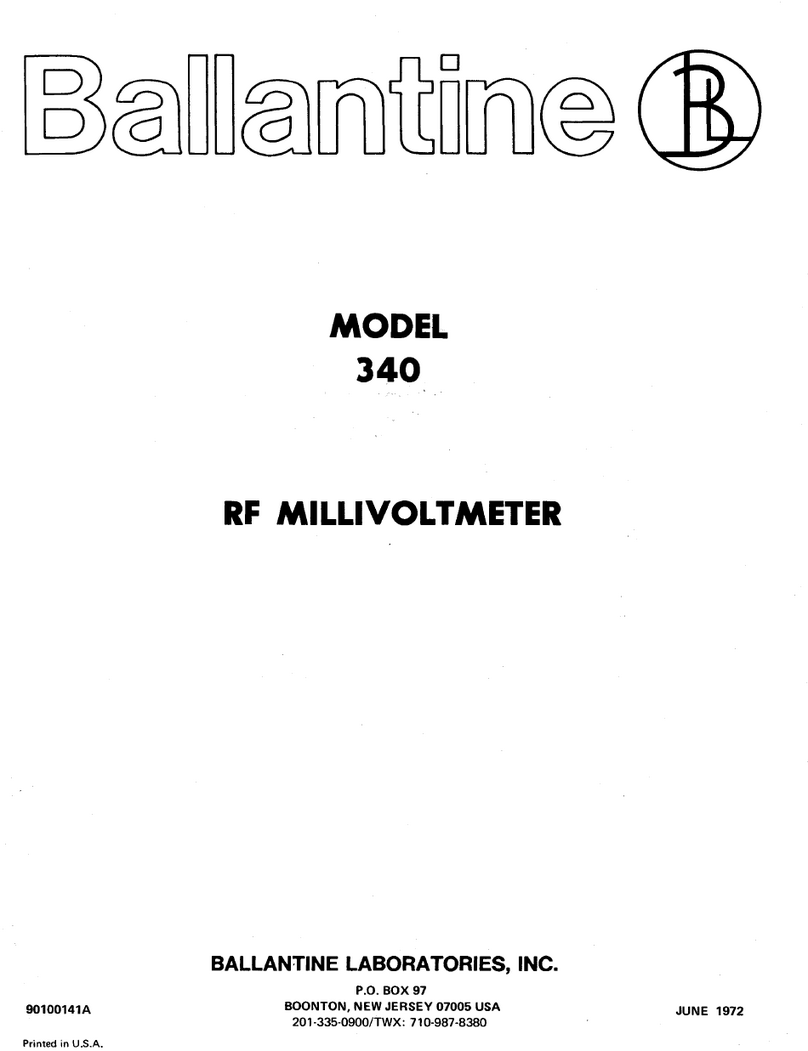
Section 1. General Information
page 1-1
GENERAL INFORMATION
1-1. INTRODUCTION
The Ballantine Model 3440 Series are compact,
lightweight portable RF Millivoltmeters. The
instruments are sensitive, wideband, fully solid state
voltmeters covering 100 µV to 3 V rms. Voltage
measurements may be extended to 300 V rms with the
Model 1340 100:1 capacitive attenuator. The 3440A is
usable over the frequency range of 10 kHz to beyond
1.2 GHz.
The Model 3440A uses an analog meter for readout
with 10 dB range switching. The instrument and its
accessories and options are described in this manual.
A feature of the Model 3440A RF Millivoltmeter is
true rms response from 100 µV to 30 mV. This feature
permits measurement of distorted signals and square
waves. It allows calibration to NIST traceable transfer
standards which are based on rms responding devices.
Through use of the Model 1340A 100:1 divider, true
rms measurements may be extended to 3 V.
The 3440A is housed in a lightweight rugged 1/2-rack
enclosure which is fully shielded and only 5.25 inches
high.
Power consumption is minimal so that rechargeable
battery option -05 provides a full working day of
operation. All range switching is done electronically;
the front panel rotary switch does not carry any signal.
The 3440A incorporates an exclusive Ballantine
development; using analog computation to obtain
diode curve matching to calibrate the millivoltmeter as
the input signal level increases and the input detector
diodes change from rms response to peak response.
This unique circuit minimizes the number of
adjustments and simplifies recalibration and
maintenance.
The probe features wideband, low capacity detector
diodes mounted in a rugged housing whose body is
compatible with type "N" connectors. A unique
proportional, solid state, temperature controlled, self-
regulating heater maintains the diodes at a constant
temperature and completely eliminates major
calibration accuracy errors due to temperature changes.
The probe is attached to the instrument through a
"quick-disconnect" 4 foot cable and is easily
interchangeable between instruments with minimum
realignment. The durable probe cable is double
shielded and uses special low noise insulation to
maximize accuracy and convenience in rough field
environments.
Signal input connection is provided by convenient
accessories. The Model 5340A Tee-Adapter for 50
ohm systems uses "N" connectors and provides
minimum VSWR matching to beyond 1.2 GHz. A
100:1 capacitive divider probe tip, Model 1340A
provides operation to 300 V rms and extends true RMS
measurement from 30 mV to 3 V. Coaxial adapter
Model 2340A permits the probe to be connected to N
and BNC connectors. Model 6340A adapter provides
a one watt 50 ohm termination for the probe when used
with BNC for N connectors and is usable beyond 600
MHz. For less demanding application the Model
4340A provides a probe tip for in-circuit measurements
below 100 MHz.
1-2. SPECIFICATIONS FOR MODEL 3440A.
1-2.1 Frequency Range:
Calibrated 10 kHz to 1.2 GHz; usable <10 kHz to >2.4
GHz; usable <10 to >2.4 GHz.
1-2.2 Response:
True RMS to 30 mV, changing gradually to peak
detector calibrated in rms of a sine wave above 30 mV.
1-2.3 Range:
Usable: < 100 µV to 30 V rms.
Eight ranges selected by front panel switch:
100 µV to 1 mV FS
3 mV FS
10 mV FS
30 mV FS
100 mV FS
300 mV FS
1 V FS
3 V FS
(-70 dBm to -50 dBm)
(-40 dBm)
(-30 dBm)
(-20 dBm)
(-10 dBm)
(0 dBm)
(+10 dBm)
(+20 dBm)
-70 dB to +60 dB to 700 MHz with optional accessory
Model 1340A 100:1 divider.
dB readings are referenced to 0.221 V (0 dBm, 1 mW
into 50 ohms.)
N8AUM






























